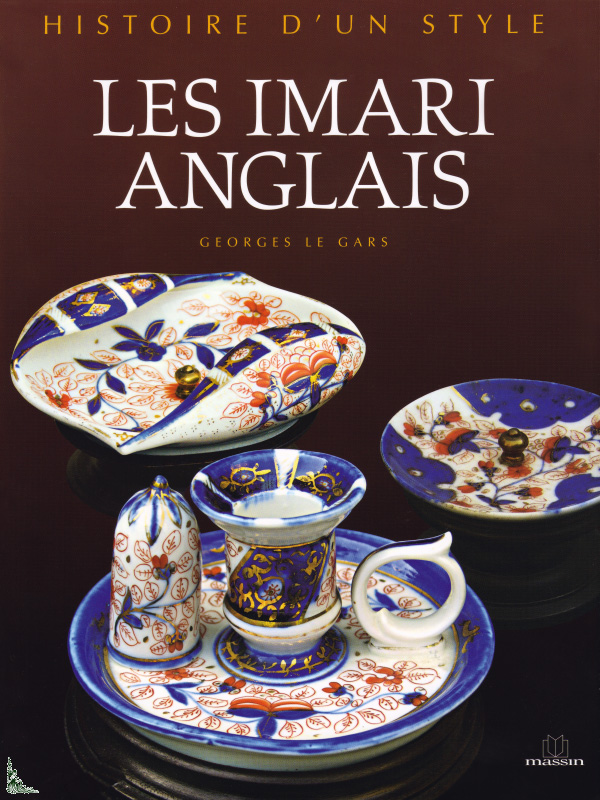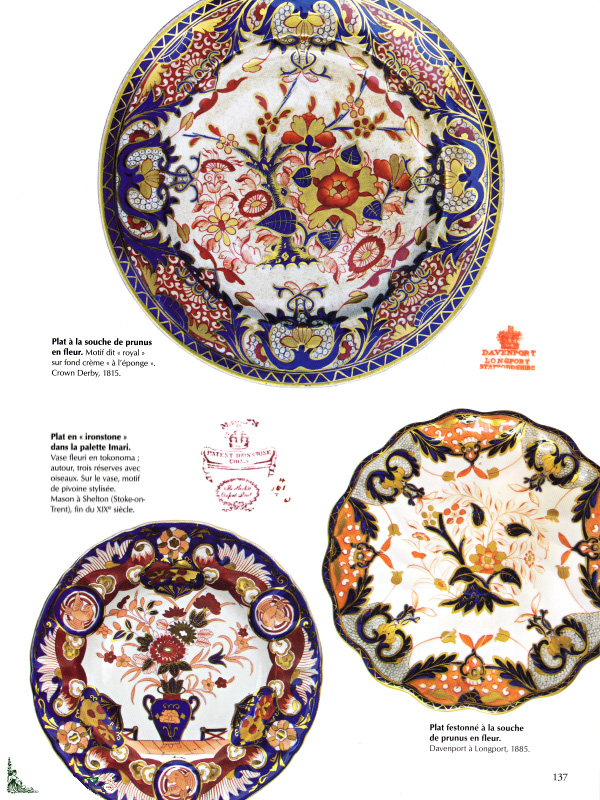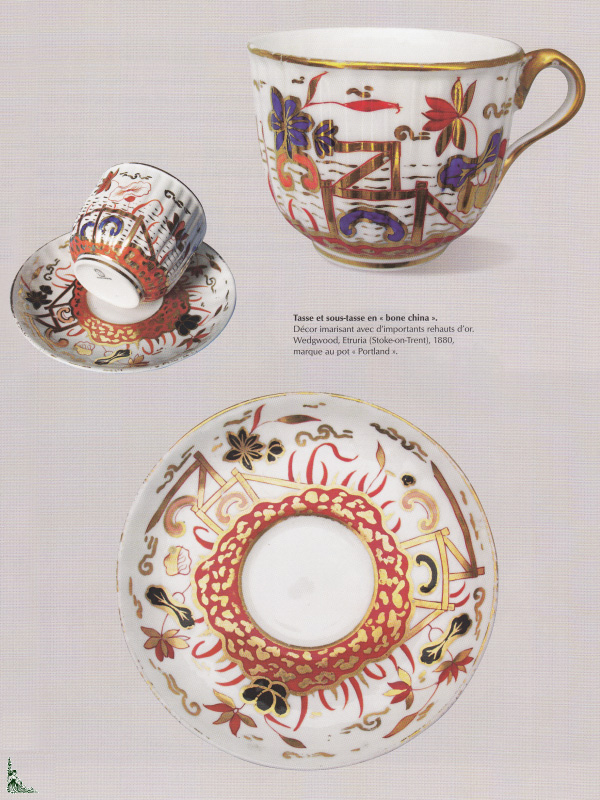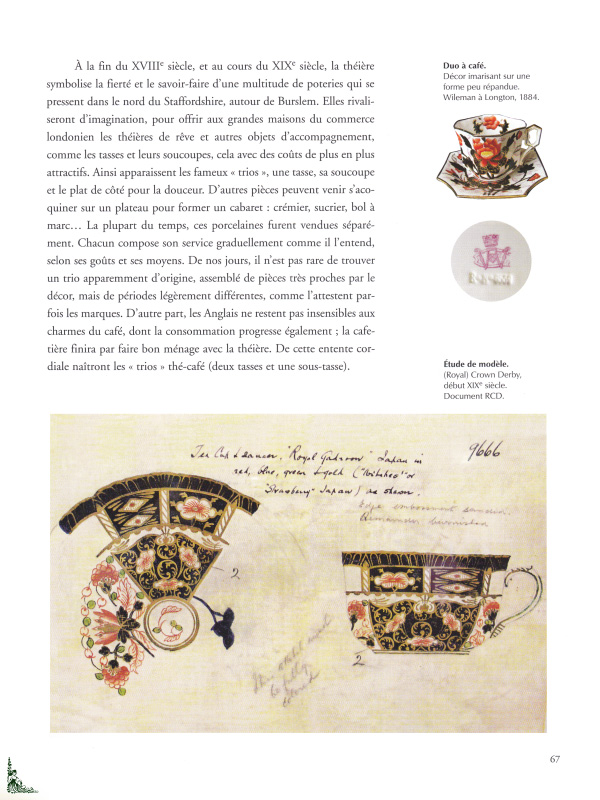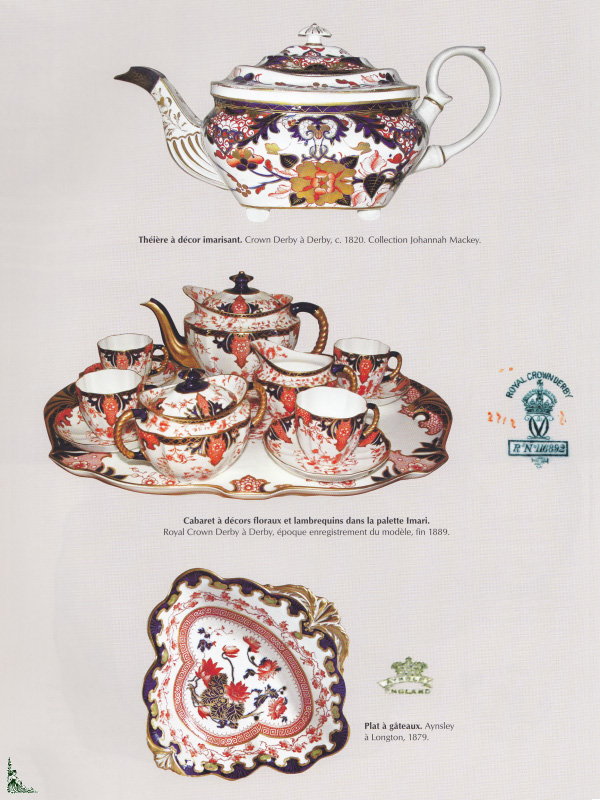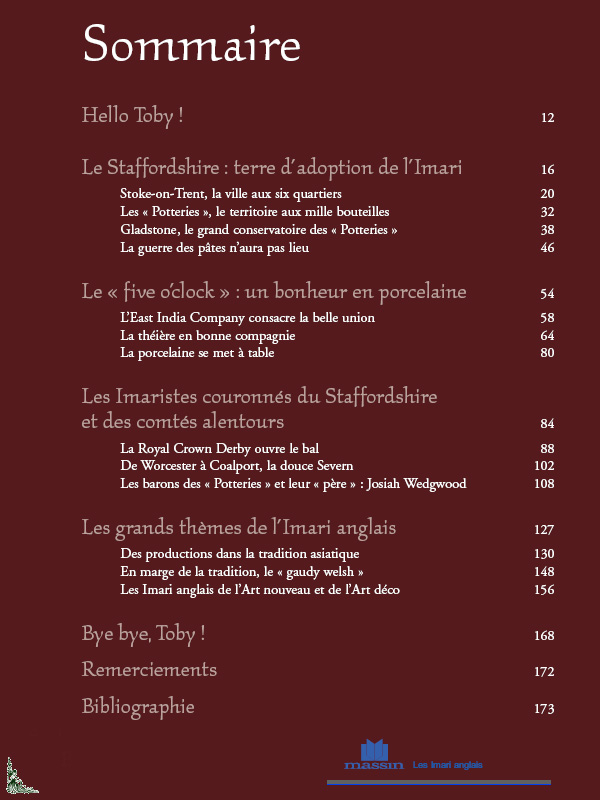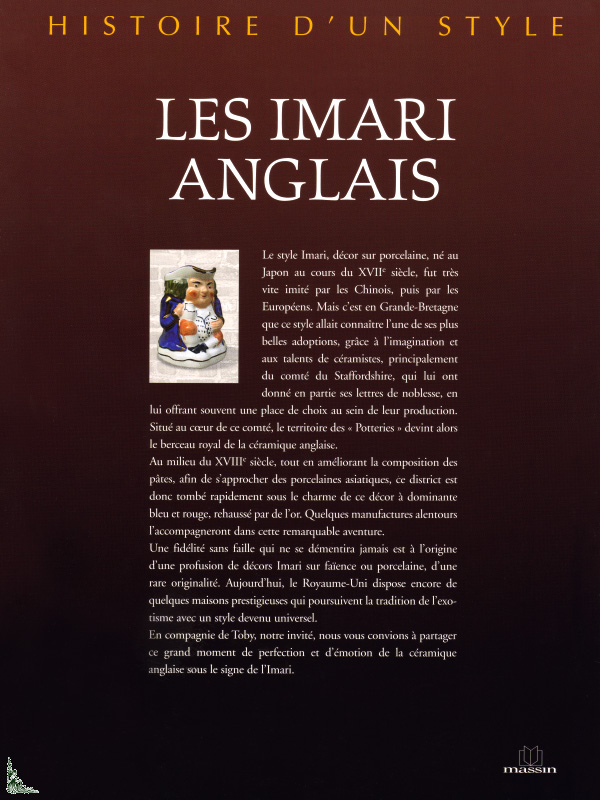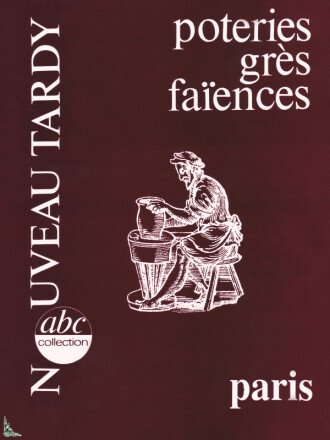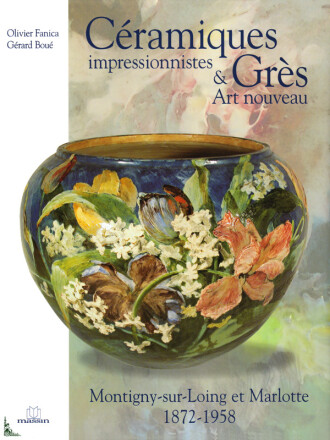IMARI of England Porcelain and Faience
Informazioni sul libro
| Autore : | Georges Le Gars |
| Editore : | Ch. Massin (2007) |
| Legatura : | Hardcover w/jacket (176 full color pages) 8 inches x 11 inches |
| Lingua : | French |
| ISBN : | 978-2-7072-0541-4 |
| EAN : | 9782707205414 |
Descrizione
IMARI of England Porcelain and Faience, by G. Le Gars, Ed. Ch. Massin, 8 inches x 11 inches ( 21 cm x 28 cm ), hardcover book with 176 full color pages
This hardcover book with 176 full color pages with more than 300 color illustrations presents the English IMARI with a complete history of these porcelains and earthenware from their origin.
The Imari style, porcelain decoration, born in Japan during the 17th century, was soon imitated by the Chinese, then by the Europeans.
But it was in Britain that this style was going to be one of his finest adoptions, thanks to the imagination and talents of ceramists, mainly from Staffordshire County, which gave him, in part, his nobility, by often offering him a place of choice within their production.
Staffordshire and surrounding counties, the "Gaudy Welsh" with markings or signatures allowing their identification from the 18th century to the periods of Art Nouveau and Art Deco.
Contents:
- Staffordshire; adopted land of Imari
- The "five o'clock": a happiness in china
- The crowned Imaris of Staffordshire and surrounding counties
- The great themes of English Imari
- Bye bye, Toby!
The French texts are written by Georges Le Gars.
 Description française
Description française
Les IMARI Anglais Porcelaines et Faïences
Détails du livre
| Auteur : | Georges Le Gars |
| Éditeur : | Ch. Massin (2007) |
| Reliure : | Relié sous jaquette (176 pages couleurs) 21 cm x 28 cm ( 8 inches x 11 inches ) |
| Langue(s) : | Français |
| ISBN : | 978-2-7072-0541-4 |
| EAN : | 9782707205414 |
Description
Les IMARI Anglais Porcelaines et Faïences, de G. Le Gars, Ed. Ch. Massin, 21 cm x 28 cm, relié avec 176 pages couleurs
Ce livre de 176 pages couleurs avec plus de 300 illustrations sur les IMARI Anglais donne un historique complet de ces porcelaines et faïences depuis leur origine.
Le style Imari, décor sur porcelaine, né au Japon au cours du XVIIe siècle, fut très vite imité par les Chinois, puis par les Européens.
Mais c'est en Grande-Bretagne que ce style allait connaitre l'une de ses plus belles adoptions, grâce à l'imagination et aux talents de céramistes, principalement du comté de Staffordshire, qui lui ont donné en partie ses lettres de noblesse, en lui offrant souvent une place de choix au sein de leur production.
Le Staffordshire et les comtés aux alentours, le "Gaudy Welsh" avec les marquages ou signatures permettant leur identification du XVIIIe siècle jusqu'aux périodes de l'Art Nouveau et de l'Art déco.
Principaux chapitres de l'ouvrage :
- Le Staffordshire; terre d'adoption de l'Imari
- Le "five o'clock" : un bonheur en porcelaine
- Les Imaristes couronnés du Staffordshire et des comtés alentours
- Les grands thèmes de l'Imari anglais
- Bye bye, Toby !
Les textes en Français sont de Georges Le Gars.


